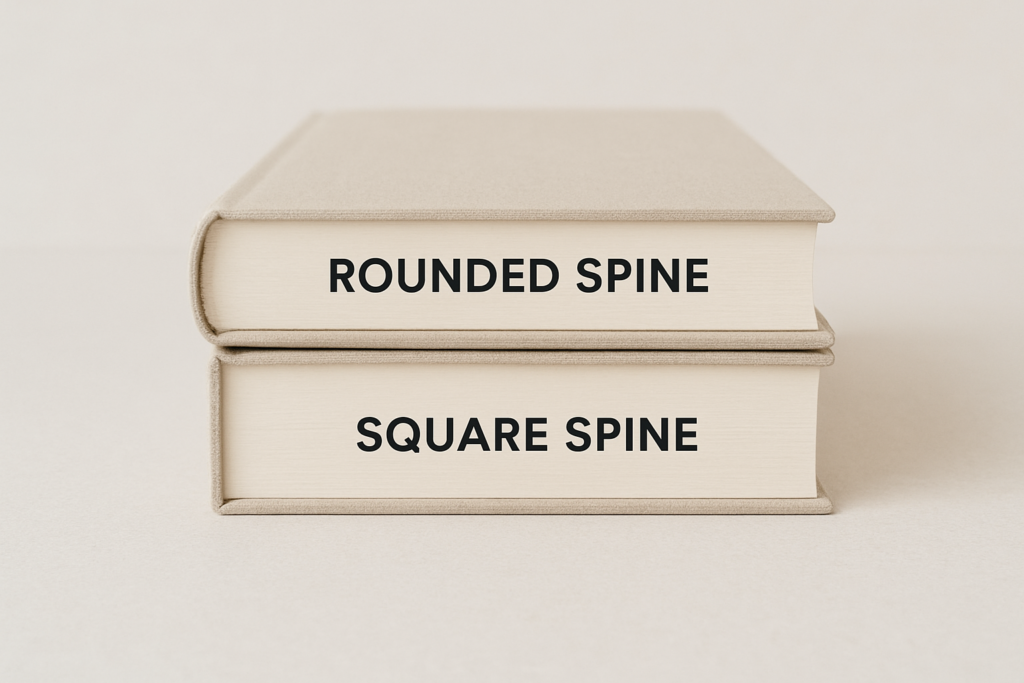In today’s Amazon marketplace, Notebooks once a simple, traditional product now exist in a fully saturated category. Without added value or a clear brand identity, it is easy for businesses to fall into a price war. In the past, consumers bought notebooks primarily as tools for jotting down information. Hoje, no entanto, many see them as a means of emotional expression, a reflection of lifestyle, and an extension of personal or brand identity.
A notebook that merely serves its basic purpose can no longer stand out. True value emerges when a notebook evokes a feeling, when holding it creates a sense of connection or belonging. Modern consumers care deeply about the story and philosophy behind a product. They are willing to pay more for brands that embody meaning, attitude, and authenticity.
Understanding what drives consumers emotionally, and how those needs can be translated into notebook design, has become a key challenge and opportunity for brands seeking to thrive amid shifting consumption trends in today’s digital era.
Understand What “Value” Means in a Notebook
From a psychological perspective, when consumers receive a premium notebook, they will at least experience self-identity, emotional regulation, a sense of meaning, and psychological reward. This process is the embodiment of value. Value is no longer defined by price or practicality alone. It is measured through experience, emotion, and connection. Let’s break down what that truly means.
1. The Power of User Experience
Writing Experience
The texture of the paper, its smoothness, and resistance to ink bleed all contribute to what users describe as a “smooth writing experience” or “pleasure to write on.” These small details transform a simple act of writing into a moment of calm and satisfaction that many consumers even consider therapeutic.
Layout & Function
Unlike traditional lined pages, Western consumers prefer structured layouts such as gratitude journals, habit trackers, or goal planners. These designs help them organize thoughts, plan their days, and cultivate mindfulness, turning notebooks into tools for self-improvement rather than simple stationery.
User Interaction
Added stickers, templates, or section dividers give notebooks a sense of playfulness and creativity. Some brands even develop companion apps that connect physical journaling with digital tracking, enhancing engagement and creating a more immersive experience.
2. Emotional and Psychological Value
Mindfulness & Self-care
Many users no longer write just to record events, but to process emotions and find calm. A notebook becomes a private space for reflection, relaxation, and healing. This is why Wellness Journals and Daily Reflection Notebooks are becoming increasingly popular as tangible tools for emotional wellbeing.
Self-expression
From the cover design to color palettes and typography, every detail becomes a way for users to express who they are. A minimalist layout might appeal to focused thinkers, while artistic patterns attract dreamers and creators. In this sense, a notebook becomes a reflection of personal identity and lifestyle.
Sense of Ritual
For many, opening a notebook marks the start of the day or the beginning of a new idea. This daily ritual gives meaning to the act of writing. As a result, customers are willing to pay more for notebooks that feel special, those with refined packaging, textured covers, or a compelling story behind them.
3. Brand Philosophy and Authentic Connection
Sustentabilidade
Consumers today expect brands to stand for something beyond profit. Using eco-friendly paper, recycled leather, or plastic-free packaging communicates responsibility and purpose. When a brand highlights values like eco-conscious craftsmanship or made with care, it builds an authentic emotional connection.
Craftsmanship & Authenticity
Independent stationery brands often emphasize craftsmanship and limited-edition production, offering a sense of uniqueness and sincerity. This human touch carries warmth that mass-produced notebooks simply cannot replicate. It reminds us that real value lies not only in what a notebook does but in how it makes people feel.
Add Value Through Custom Design and Branding
For notebook brands, customization begins with the logo, followed by the cover design, and finally the inner pages. Each material and cover type complements different printing techniques. Por exemplo, leather notebooks are best suited for foil stamping or embossing, while hardcover notebooks work well with silk screen or UV printing. Ideally, the logo should occupy about 15–20% of the notebook’s front surface, creating a balanced and elegant presentation that reinforces brand visibility without overwhelming the design.
When it comes to appearance, every detail contributes to how consumers perceive quality and personality. A soft leather cover invites touch and conveys warmth, while a well-crafted hardcover delivers both visual and tactile satisfaction. Minimalist designs suggest a sense of order and rationality, while planner-style notebooks communicate creativity, passion, and a love for everyday life.
Inside the notebook, details matter just as much. Suave, ink-resistant paper and easy page turning make writing an enjoyable and relaxing experience. Beyond traditional lined pages, the addition of stickers, templates, and section dividers helps users plan their lives, organize their thoughts, and feel a greater sense of control. These thoughtful touches turn a simple notebook into a meaningful daily companion, adding true value that resonates with modern consumers.
Choose Premium Materials That Reflect Your Brand
Premium materials not only give you a sense of class and brand image, but also a sense of scarcity and unique experience.For B2B buyers, material selection goes beyond aesthetics. It is about aligning product identity with brand positioning. A company gifting premium notebooks to clients might prefer a soft leather finish to convey trust and sophistication, while a creative brand could choose colorful fabric or textured covers to express originality and energy.
Enhance Functionality to Make It Truly Useful
While design and materials define how a notebook looks and feels, functionality determines how it performs. For modern consumers, convenience and versatility have become key factors in defining product value. For B2B buyers, these thoughtful details often make the difference between an ordinary notebook and one that stands out in the market.
Protective Metal Corners
Metal corners not only enhance durability but also add a refined, professional touch. They prevent wear and bending over time, making the notebook ideal for everyday or travel use—an important feature for business and executive notebooks.
Magnetic Closure
A magnetic clasp brings both practicality and elegance. It keeps pages secure while adding a smooth, satisfying closure experience that subtly elevates perceived quality.
Pockets and Storage Pages
Inner pockets or storage sleeves make the notebook more than just a writing tool—they turn it into an organizer. Users can easily store business cards, notes, or receipts, which makes it particularly appealing for office or corporate use.
Page Markers and Elastic Bands
Ribbon bookmarks, page markers, and elastic bands all improve usability and help users keep their thoughts organized. They are simple details that demonstrate thoughtful design and user consideration.
Pen Holder
An attached pen loop ensures that the notebook and pen always stay together, providing convenience in professional environments or during travel.
Removable or Refillable Pages
For users who value flexibility, refillable or removable pages add long-term usability. They allow customization according to purpose—daily planner, meeting notes, or project tracker—without replacing the entire notebook.
Perforated or Detachable Pages
Perforated edges enable clean page removal, ideal for those who need to share notes or hand out pages in meetings.
Every one of these elements contributes to a smoother, more efficient user experience while adding a sense of premium craftsmanship. Para marcas, offering such customizable functional options becomes a key differentiator in the competitive notebook market, allowing each product to be both practical and personal.
Create a Branded Unboxing Experience
The first impression often begins before the notebook is even opened. A well-designed packaging can turn a simple product into a memorable brand experience. Rigid boxes, sleeve wraps, or kraft gift boxes all add layers of anticipation and value. When customers unwrap a notebook that reflects care and attention from the texture of the box to the placement of a thank-you card. They feel a genuine connection with the brand. For B2B buyers, such packaging not only enhances perceived quality but also transforms a notebook into a thoughtful corporate gift that communicates professionalism and brand identity.
Tell a Story — Add Emotional Value
Beyond design and materials, a notebook becomes truly meaningful when it carries a story. Por exemplo, a European stationery brand once launched a limited-edition notebook series inspired by morning light. Each cover used a subtle gradient of soft beige and gold, symbolizing the calm start of a new day. Dentro, gentle ivory paper with gold-edged corners carried a short line of poetry on the first page: “Every sunrise writes a new story.” The collection quickly became popular among professionals and writers who valued reflection and inspiration in their daily lives.
Collaborate with a Professional Notebook Manufacturer
In the end, a notebook’s true value lies not just in its paper or cover, but in the experience, emotion, and story it delivers. By thoughtfully combining design, materials, funcionalidade, and brand narrative, businesses can create notebooks that stand out in a crowded market. These products become more than tools. They become meaningful companions, reflections of identity, and tangible expressions of a brand’s philosophy. Partnering with the right manufacturer ensures that every detail aligns with your vision, helping your notebooks leave a lasting impression on users and turn everyday writing into a memorable experience.





















